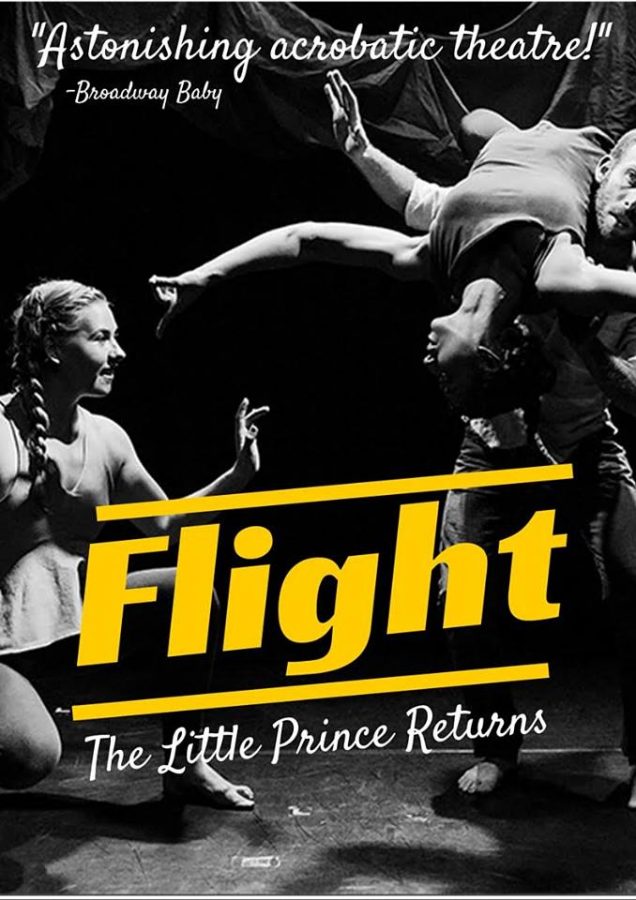‘Flight’ Takes Physical Storytelling to New Heights
Tonight at the Barrow Street Theater a production of Flight was performed as a part of the Fringe Encore Festival.
September 28, 2016
“Flight” is being proclaimed as “one of the summer’s best shows” has earned the title in part due to its uniquely physical manner of storytelling. Running now at the SoHo Playhouse as part of the Fringe Encore Series, the show features just three actors with no props or stage setting. They are all contortionists who transform their bodies to act alongside the plot; their bodies in and of themselves become the characters and stories. The play holds a heartwarming message that following your heart is the key to long-term happiness, in part inspired by Antoine de Saint-Exupery’s 1943 classic “The Little Prince.”
The show starts off with a man whose plane broke down on an island where he meets a girl called “The Little Prince.” The Little Prince is a loving, carefree soul who starts telling the man a story of her journey. The simple dialogue is acted out with clever acrobatic tricks. One scene was created with actions as simple as the man narrating while sitting on a seat made up of the two other acrobats. This creativity is taken to the next level when on her journey, the Little Prince talks about the cactus that she loves. One acrobat climbed atop another, placing one foot on their shoulder and the other spread out along with her arms to mimic that of a spiny cactus.
Throughout the play, simple sounds accompany the plot: whooshing sounds for wind, high-pitched beeps when the girl is pricked by the human cactus, clicking sounds, grunts and other imaginative noises to coincide with their stories. These sounds work jointly with the actors’ bodies to progress time. The Little Prince takes the man and the other acrobat with her to five other islands as she searches for a friend. As they move through the imaginary water to each island, the light in the theater darkens, and they gracefully move their bodies atop each other to narrate the passage of time. The male acrobat transforms into the chief inhabitant on the first island, while the other two acrobats add to his entourage, standing behind him and putting their arms on his hips as if they were his and giving him glasses with their hands. The chief is stern and The Little Prince decides she cannot be friends with him, so she goes to the next island. She continues this journey looking for a friend and all the while having the acrobats represent different people doing different things. Each action they perform represents some non-human object, yet if you indulge yourself into the story, it is surprisingly easy to imagine them as the objects they are portraying.
The Little Prince eventually comes upon a stingray, which is actually a large piece of yellow cloth the two acrobats lift up and down to create the easy motion of a stingray. Finally, she finds a friend in a turtle, who is the other female acrobat, standing with her arms floating to the sides and her body slack, imitating the belly of a turtle floating in the water. The Little Prince has to spend time taming the turtle, which involves advanced acrobatic skills amongst the two girls — rolling on top of each other, intertwining their bodies along each other’s. The show ends with the man fixing his plane and ready to leave. The Little Prince tells the man to look into the waves and think of her and she will remember him. She reminds him to never to forget to see with his heart.
“Flight” was an abstract sort of story telling which was incredibly enjoyable and awing to watch as these three talented people narrated a story using solely their bodies.
“Flight” is running as part of the 2016 Fringe Encore Series at the SoHo Playhouse at 15 Vandam St. until Sept. 30.
Email Caroline Zemsky at [email protected].
























































































































































